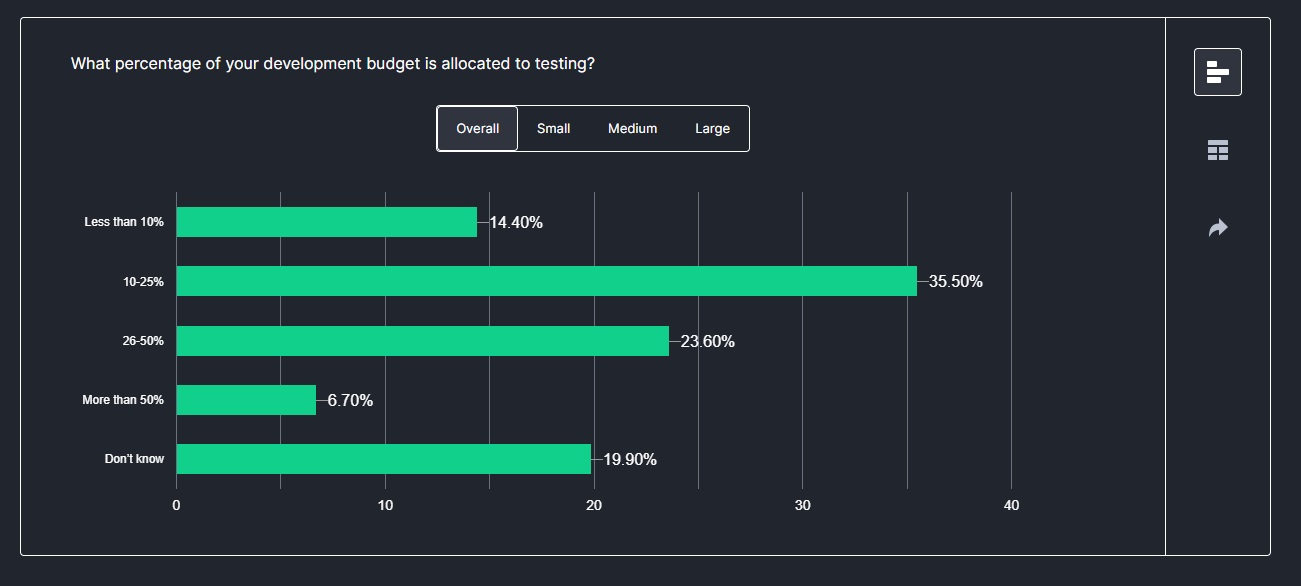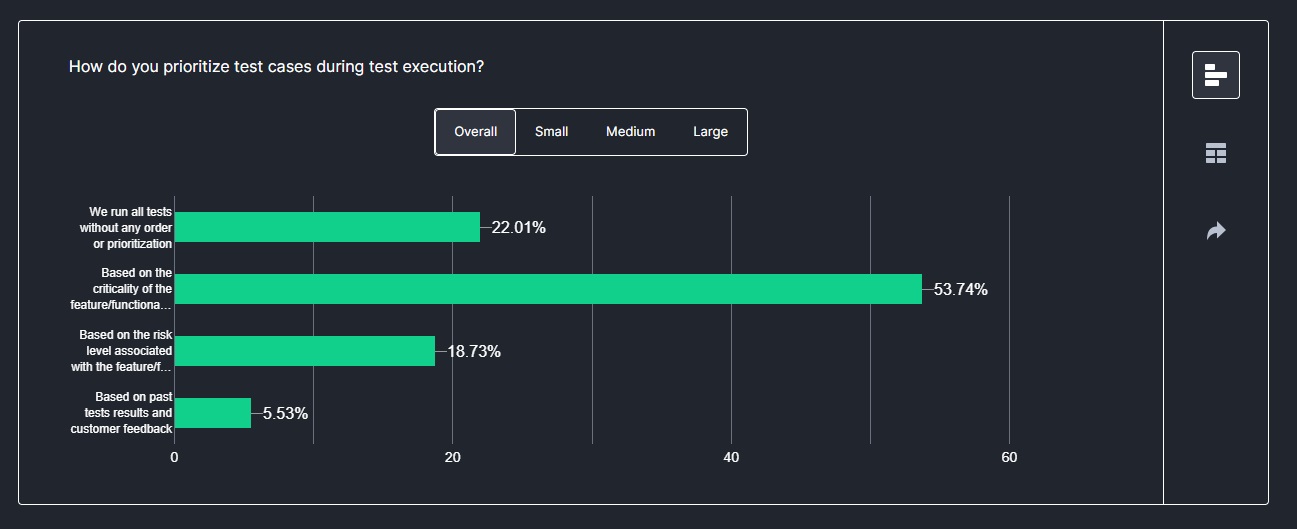LambdaTest announced the launch of the HyperExecute MCP Server, an enhancement to its AI-native test orchestration platform, HyperExecute.
Software development is on the rise, and so are the expectations around its quality. When it comes to ensuring quality, there are various quality assurance (QA) techniques. As a tester, you can leverage different QA strategies, such as prioritizing and optimizing QA processes through CI/CD adoption, test orchestration, AI-based tooling, and more. Also, addressing issues such as flaky tests and increasing observability will result in more efficient and effective quality assurance practices.
The Future of Quality Assurance survey from LambdaTest suggests that almost 78% of software testers have already adopted AI-driven tools to optimize their test process.
Adoption of AI in Test Automation
The rise of AI in test automation is very interesting! With 77.7% of organizations focusing on data creation, log analysis, and even test case generation, it's clear the potential is massive. But there are challenges too.
The biggest concerns? Reliability (60.3%) and skill gaps (54.4%). We need AI tools to be transparent and explainable, building trust with testers. And upskilling is crucial to bridge the knowledge gap and empower them to wield this new power effectively.

Click on chart above for larger image
The key lies in collaboration. AI developers must prioritize user-friendly interfaces and clear explanations. Industry leaders, training providers, and communities need to join forces to create accessible learning materials. And organizations should start small, scaling iteratively as they gain confidence.
It’s important to note that AI should augment, not replace, human expertise and ethical considerations, and human-AI collaboration is important. By working together, testers can leverage the true potential of AI to revolutionize test automation and deliver exceptional software quality.
Bandwidth of QA Teams
As per the survey, QA teams spend nearly 18% of their time setting up test environments and running flaky tests, which is a major bottleneck. However, in this case, the right tools can be game changers to detect flaky tests and perform root cause analysis to address unreliable tests. This translates into faster testing, improved collaboration, and lower costs.

Click on chart above for larger image
So, it is important to choose the right tools for your needs and strategically implement them to reap the benefits.
Culture of Testing
More than 70% of organizations include testers in sprint planning, but smaller teams fall behind. The difference is likely the result of limited resources and communication barriers.

Click on chart above for larger image
To bridge these gaps, emphasize the importance of testing, encourage shared ownership through cross-training, implement easy-to-use tools, and create effective communication channels. This will also help small teams reap the benefits of tester participation in sprint planning.
Adoption of CI/CD Processes
While 89.1% of teams have implemented CI/CD tools in their test process to speed up releases, 45% still run automated tests manually. It shows a gap between CI/CD adoption and its usage. This may be attributed to a different understanding, insufficient training, advanced tools that need a learning curve, or challenges with integration.

Click on chart above for larger image
To close this gap, organizations can increase awareness, drive cultural change, optimize techniques, and fix specific issues, ultimately realizing the full potential of CI/CD for faster delivery, higher quality, and low risks.
Test Intelligence and Analytics Gap
Around 30% of organizations need dedicated test intelligence infrastructure. It results in reactive testing and not-so-smooth resource allocation to measure testing effectiveness.
So, a viable option here is to invest in dedicated tools, making the most of your platforms, adopting structured reporting, and fostering a data-driven culture. This will help you not only optimize your testing processes but also deliver higher-quality software faster.

Click on chart above for larger image
Challenges in Prioritizing Tests
While the stats are promising, with 77.7% of organizations embracing AI/ML in test automation, challenges remain there due to reliability concerns (60.3%), and skill gaps (54.4%). Addressing these through user-friendly tools, comprehensive training, and iterative adoption is critical.
The future is bright, but ethical considerations and the importance of human-AI collaboration must be addressed.

Click on chart above for larger image
Closing Thoughts
While AI in test data creation, test analysis, and test cases shows promise for 77.7% of organizations, reliability concerns (60.3%) and skill gaps (54.4%) remain key hurdles. Testers can address these with user-friendly AI tools, training, and iterative adoption.
Remember, AI augments but does not replace human expertise. It is important to prioritize and optimize testing through CI/CD, test orchestration, and AI tools, addressing flaky tests for faster, more efficient processes. Side-by-side, foster a testing culture with tester inclusion in sprint planning, especially in smaller teams, and provide easy-to-use tools for better communication and collaboration.
Developers and testers can bridge the CI/CD gap with cultural change, technique optimization, and addressing integration challenges to unlock its full potential. Additionally, invest in dedicated test intelligence tools and leverage existing platforms, adopting structured reporting and a data-driven culture for optimized testing and faster, high-quality software delivery.
The future of QA is not just about tools but collaboration, continuous learning, and a shared commitment to excellence. By focusing on these key areas, QA professionals can harness technology, empower people, and deliver exceptional software quality in the future.
Industry News
Cloudflare announced Workers VPC and Workers VPC Private Link, new solutions that enable developers to build secure, global cross-cloud applications on Cloudflare Workers.
Nutrient announced a significant expansion of its cloud-based services, as well as a series of updates to its SDK products, aimed at enhancing the developer experience by allowing developers to build, scale, and innovate with less friction.
Check Point® Software Technologies Ltd.(link is external) announced that its Infinity Platform has been named the top-ranked AI-powered cyber security platform in the 2025 Miercom Assessment.
Orca Security announced the Orca Bitbucket App, a cloud-native seamless integration for scanning Bitbucket Repositories.
The Live API for Gemini models is now in Preview, enabling developers to start building and testing more robust, scalable applications with significantly higher rate limits.
Backslash Security(link is external) announced significant adoption of the Backslash App Graph, the industry’s first dynamic digital twin for application code.
SmartBear launched API Hub for Test, a new capability within the company’s API Hub, powered by Swagger.
Akamai Technologies introduced App & API Protector Hybrid.
Veracode has been granted a United States patent for its generative artificial intelligence security tool, Veracode Fix.
Zesty announced that its automated Kubernetes optimization platform, Kompass, now includes full pod scaling capabilities, with the addition of Vertical Pod Autoscaler (VPA) alongside the existing Horizontal Pod Autoscaler (HPA).
Check Point® Software Technologies Ltd.(link is external) has emerged as a leading player in Attack Surface Management (ASM) with its acquisition of Cyberint, as highlighted in the recent GigaOm Radar report.
GitHub announced the general availability of security campaigns with Copilot Autofix to help security and developer teams rapidly reduce security debt across their entire codebase.
DX and Spotify announced a partnership to help engineering organizations achieve higher returns on investment and business impact from their Spotify Portal for Backstage implementation.
Appfire announced its launch of the Appfire Cloud Advantage Alliance.













